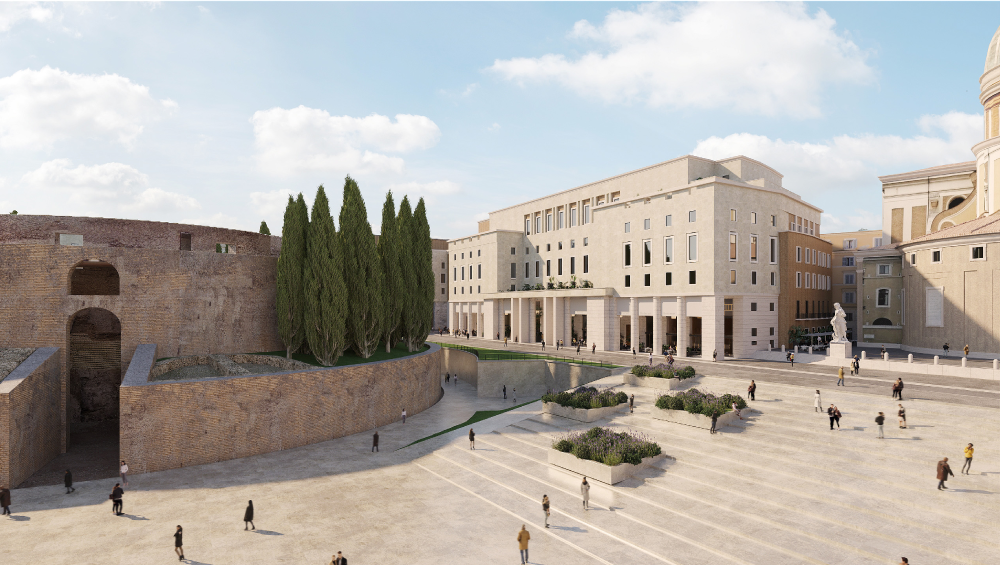A key landmark of the eternal city

THE PROJECT
Augusto Imperatore is the ambitious revitalisation project in one of the most prestigious areas of Rome’s historic centre, a far-reaching endeavour that will restore a highly symbolic place steeped in history. The new piazza will accommodate shops, modern offices and tourism and culture-based activities that will coexist amongst various functions, each of which will contribute to generating a new focal point for Rome. It will be an attractive and vital destination, providing the capital with a cultural and economic centre experienced daily by thousands of people. A major private investment to crown an operation based on a prestigious redevelopment and transformation of use, in which renovation of the Mausoleum and the surrounding Piazza Augusto Imperatore, Largo dei Lombardi and Via del Corso are harmoniously integrated.
A new cultural and economic landmark.

PUBLIC/PRIVATE SYNERGY
Edizione Property is the promoter of an impressive series of coordination and collaboration activities between public and private sectors at the national level, with many entities involved along the way: the “Soprintendenza Speciale Archeologia, Belle Arti e Paesaggio” (Office of Archaeology, Fine Arts and Landscape), the “Sovrintendenza Capitolina ai Beni Culturali, Municipio 1” (Office of Cultural Heritage of Rome, Municipio 1), the Mayor’s Office, Bulgari, the TIM Foundation, the Mobility and Public Works Departments, the Municipal Traffic Police, AMA SpA, etc., with the ultimate goal of coordinating the construction sites in Piazza Augusto Imperatore, Largo dei Lombardi and Via del Corso in order to enhance a major urban regeneration project that will create a new and attractive hub in Rome.
An important urban regeneration project that will create a new centre of attraction in Rome.
The 1930s
The Piazza Augusto Imperatore Complex originated in the broad urban planning intervention of the years 1926-1944 for development of the area. Designed by architect V.B. Morpurgo, the complex consists of five buildings whose common feature is the austere and imposing architectural layout, surrounded by marble and curtain walling, sculptures and mosaics, highlighting extensive Roman symbolism through the use of impressive walls and large shapes suspended on powerful travertine pillars.
Today, the area is becoming a landmark for the city, a dynamic and attractive promenade.

